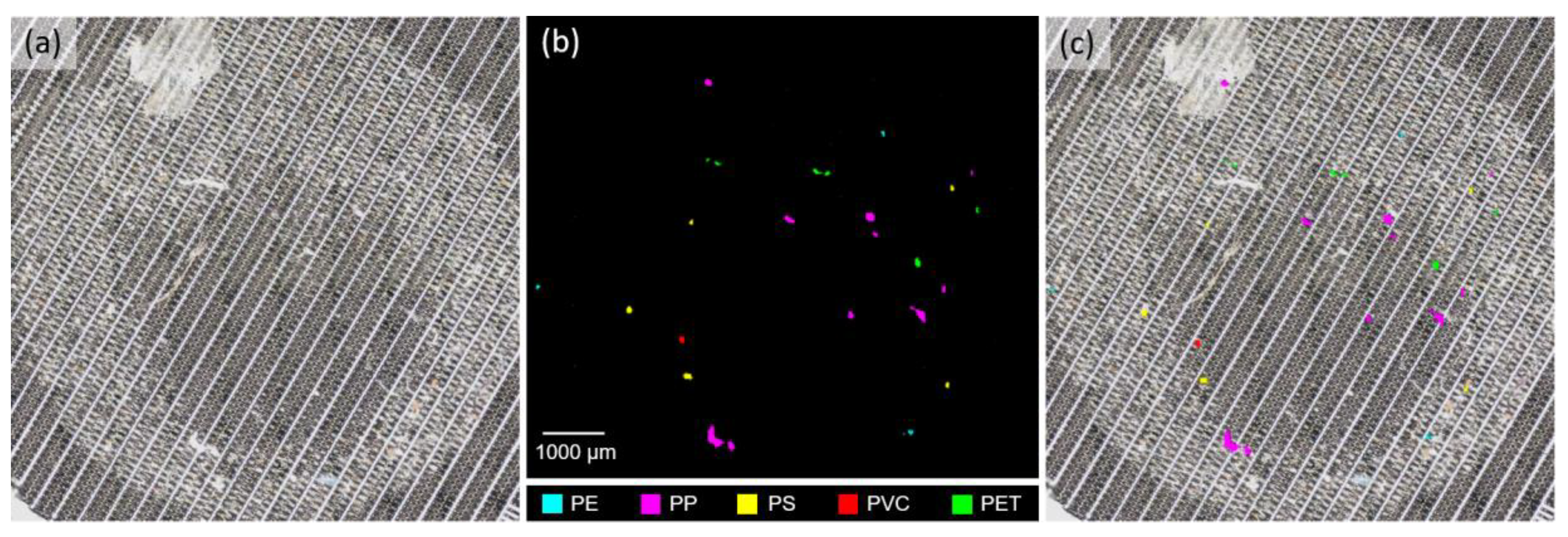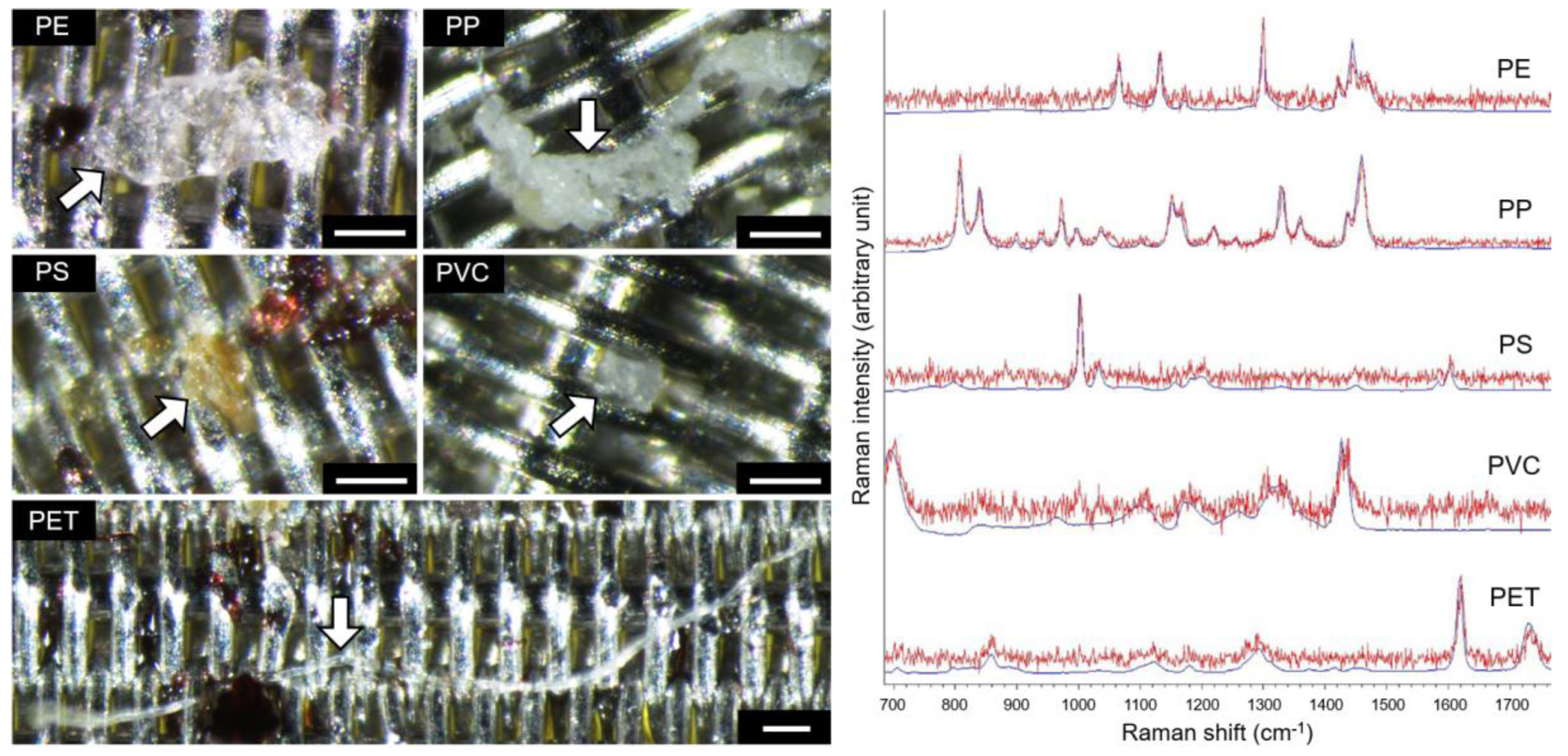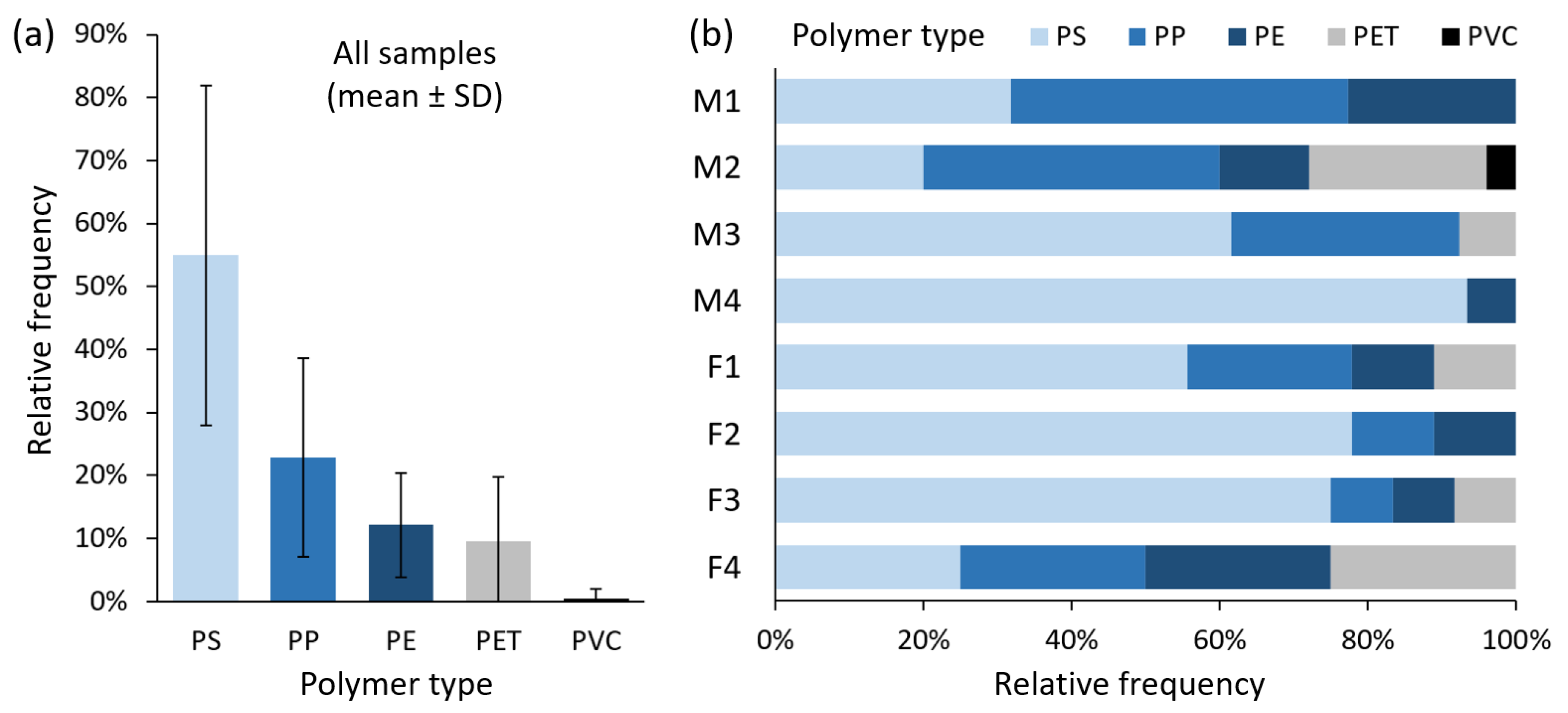Preliminary Findings of the High Quantity of Microplastics in Faeces of Hong Kong Residents
Abstract
:1. Introduction
2. Materials and Methods
3. Results and Discussion
4. Conclusions
Author Contributions
Funding
Institutional Review Board Statement
Informed Consent Statement
Acknowledgments
Conflicts of Interest
References
- PlasticsEurope. Plastics—The Facts 2019; An analysis of European latest plastics production, demand and waste data; PlasticsEurope: Brussels, Belgium, 2019. [Google Scholar]
- Lebreton, L.; Van Der Zwet, J.; Damsteeg, J.W.; Slat, B.; Andrady, A.; Reisser, J. River plastic emissions to the world’s oceans. Nat. Commun. 2017, 8, 1–10. [Google Scholar] [CrossRef] [PubMed]
- Jabeen, K.; Su, L.; Li, J.; Yang, D.; Tong, C.; Mu, J.; Shi, H. Microplastics and mesoplastics in fish from coastal and fresh waters of China. Environ. Pollut. 2017, 221, 141–149. [Google Scholar] [CrossRef]
- Zhang, Q.; Xu, E.G.; Li, J.; Chen, Q.; Ma, L.; Zeng, E.Y.; Shi, H. A review of microplastics in table salt, drinking water, and air: Direct human exposure. Environ. Sci. Technol. 2020, 54, 3740–3751. [Google Scholar] [CrossRef] [PubMed]
- Leung, M.M.L.; Ho, Y.W.; Maboloc, E.A.; Lee, C.H.; Wang, Y.; Hu, M.; Cheung, S.G.; Fang, J.K.H. Determination of microplastics in the edible green-lipped mussel Perna viridis using an automated mapping technique of Raman microspectroscopy. J. Hazard. Mater. 2021, 420, 126541. [Google Scholar] [CrossRef] [PubMed]
- Schwabl, P.; Koppel, S.; Konigshofer, P.; Bucsics, T.; Trauner, M.; Reiberger, T.; Liebmann, B. Detection of various microplastics in human stool: A prospective case series. Ann. Intern. Med. 2019, 171, 453–457. [Google Scholar] [CrossRef] [PubMed]
- Wibowo, A.T.; Nugrahapraja, H.; Wahyuono, R.A.; Islami, I.; Haekal, M.H.; Fardiansyah, Y.; Sugiyo, P.W.W.; Putro, Y.K.; Fauzia, F.N.; Santoso, H.; et al. Microplastic contamination in the human gastrointestinal tract and daily consumables associated with an Indonesian farming community. Sustainability 2021, 13, 12840. [Google Scholar] [CrossRef]
- Yan, Z.; Zhao, H.; Zhao, Y.; Zhu, Q.; Qiao, R.; Ren, H.; Zhang, Y. An efficient method for extracting microplastics from feces of different species. J. Hazard. Mater. 2020, 384, 121489. [Google Scholar] [CrossRef] [PubMed]
- Zhang, J.; Wang, L.; Trasande, L.; Kannan, K. Occurrence of polyethylene terephthalate and polycarbonate microplastics in infant and adult feces. Environ. Sci. Technol. Lett. 2021, 8, 989–994. [Google Scholar] [CrossRef]
- Zhang, N.; Li, Y.B.; He, H.R.; Zhang, J.F.; Ma, G.S. You are what you eat: Microplastics in the feces of young men living in Beijing. Sci. Total Environ. 2021, 767, 144345. [Google Scholar] [CrossRef] [PubMed]
- Kannan, K.; Vimalkumar, K. A review of human exposure to microplastics and insights into microplastics as obesogens. Front. Endocrinol. 2021, 12, 724989. [Google Scholar] [CrossRef] [PubMed]
- Yeoh, Y.K.; Chen, Z.; Wong, M.C.; Hui, M.; Yu, J.; Ng, S.C.; Sung, J.J.Y.; Chan, F.K.L.; Chan, P.K. Southern Chinese populations harbour non-nucleatum Fusobacteria possessing homologues of the colorectal cancer-associated FadA virulence factor. Gut 2020, 69, 1998–2007. [Google Scholar] [CrossRef] [PubMed] [Green Version]
- Leung, M.M.L.; Ho, Y.W.; Lee, C.H.; Wang, Y.; Hu, M.; Kwok, K.W.H.; Chua, S.L.; Fang, J.K.H. Improved Raman spectroscopy-based approach to assess microplastics in seafood. Environ. Pollut. 2021, 289, 117648. [Google Scholar] [CrossRef] [PubMed]
- Zhang, H.; Wu, J.; Zhang, J.; He, J. 1-Allyl-3-methylimidazolium chloride room temperature ionic liquid: A new and powerful nonderivatizing solvent for cellulose. Macromolecules 2005, 38, 8272–8277. [Google Scholar] [CrossRef]
- Miller, M.E.; Kroon, F.J.; Motti, C.A. Recovering microplastics from marine samples: A review of current practices. Mar. Pollut. Bull. 2017, 123, 6–18. [Google Scholar] [CrossRef] [PubMed]
- Prata, J.C.; da Costa, J.P.; Duarte, A.C.; Rocha-Santos, T. Methods for sampling and detection of microplastics in water and sediment: A critical review. TrAC Trends Anal. Chem. 2019, 110, 150–159. [Google Scholar] [CrossRef]
- Käppler, A.; Fischer, D.; Oberbeckmann, S.; Schernewski, G.; Labrenz, M.; Eichhorn, K.J.; Voit, B. Analysis of environmental microplastics by vibrational microspectroscopy: FTIR, Raman or both? Anal. Bioanal. Chem. 2016, 408, 8377–8391. [Google Scholar] [CrossRef] [PubMed]
- Cabernard, L.; Roscher, L.; Lorenz, C.; Gerdts, G.; Primpke, S. Comparison of Raman and Fourier transform infrared spectroscopy for the quantification of microplastics in the aquatic environment. Environ. Sci. Technol. 2018, 52, 13279–13288. [Google Scholar] [CrossRef] [PubMed]




| Sampling Region | China (Hong Kong) | China (Beijing) | Indonesia (a Rural Village of Pacet) | Japan (Tokyo) and Europe (7 Cities 1) |
|---|---|---|---|---|
| Sample size and gender | 4 men and 4 women | 24 men | 5 men and 6 women | 3 men and 5 women |
| Years of age | 30–65 | 18–25 | 20–50 | 33–65 |
| Prevalence of MP 2 | 100% | 96% | 64% | 100% |
| Quantity of MP, range | 20.4–138.9 particles g−1 | 1.0–36.0 particles g−1 | 6.9–16.5 µg g−1 | 0.8–41.6 particles g−1 |
| Quantity of MP, mean ± SD | 50.3 ± 39.0 particles g−1 | 8.9 ± 8.5 particles g−1 | 12.2 ± 4.1 µg g−1 | 9.3 ± 14.8 particles g−1 |
| Quantity of MP, median | 36.4 particles g−1 | 6.5 particles g−1 | 12.4 µg g−1 | 2.0 particles g−1 |
| Detected size range of MP | 30–1800 µm | 20–800 µm | Not reported | 50–500 µm |
| Major polymers of MP | PS > PP > PE > PET 2 | PP > PET > PS > PE | PP > PE > PS > PET | PP > PET > PS > PE |
| Major shapes of MP | Fragment > fibre | Not reported | Not reported | Fragment and film > sphere and fibre |
| Spectroscopic approach | Raman | FTIR 2 | Raman | FTIR |
| Reference | Present study | [10] | [7] | [6] |
Publisher’s Note: MDPI stays neutral with regard to jurisdictional claims in published maps and institutional affiliations. |
© 2022 by the authors. Licensee MDPI, Basel, Switzerland. This article is an open access article distributed under the terms and conditions of the Creative Commons Attribution (CC BY) license (https://creativecommons.org/licenses/by/4.0/).
Share and Cite
Ho, Y.-W.; Lim, J.Y.; Yeoh, Y.K.; Chiou, J.-C.; Zhu, Y.; Lai, K.P.; Li, L.; Chan, P.K.S.; Fang, J.K.-H. Preliminary Findings of the High Quantity of Microplastics in Faeces of Hong Kong Residents. Toxics 2022, 10, 414. https://doi.org/10.3390/toxics10080414
Ho Y-W, Lim JY, Yeoh YK, Chiou J-C, Zhu Y, Lai KP, Li L, Chan PKS, Fang JK-H. Preliminary Findings of the High Quantity of Microplastics in Faeces of Hong Kong Residents. Toxics. 2022; 10(8):414. https://doi.org/10.3390/toxics10080414
Chicago/Turabian StyleHo, Yuen-Wa, Jin Yan Lim, Yun Kit Yeoh, Jia-Chi Chiou, Yuyan Zhu, Keng Po Lai, Lei Li, Paul Kay Sheung Chan, and James Kar-Hei Fang. 2022. "Preliminary Findings of the High Quantity of Microplastics in Faeces of Hong Kong Residents" Toxics 10, no. 8: 414. https://doi.org/10.3390/toxics10080414
APA StyleHo, Y.-W., Lim, J. Y., Yeoh, Y. K., Chiou, J.-C., Zhu, Y., Lai, K. P., Li, L., Chan, P. K. S., & Fang, J. K.-H. (2022). Preliminary Findings of the High Quantity of Microplastics in Faeces of Hong Kong Residents. Toxics, 10(8), 414. https://doi.org/10.3390/toxics10080414







